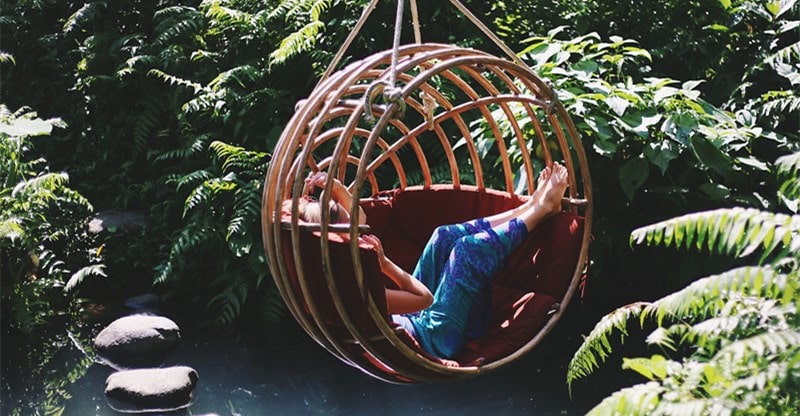Making Your Green Lifestyle Stress-Free
Living a green lifestyle is the ultimate objective in a modern and busy life. The idea of going green triggers a sudden change of pace, not just for the environment but also for the household. In a world where everything needs to go fast, making room for environmentally-friendly habits can disrupt your routine dramatically.
That’s probably why most of us mentally associate the environmental cause with a care-free, – dare we say, hippie – attitude. The hippie is, in the cultural mindset, an individual who has openly rejected conventional values to redefine their own values. As such, it seems normal to believe that a green lifestyle is going against social conventions.
After all, everything in our lives makes it hard to protect the environment, from the daily commute to food production.
Changing your routine to introduce a green lifestyle becomes, therefore, akin to a social challenge. Preserving the environment means avoiding many of the commodities and established solutions that are part of everyday life.
In other words, as much as we understand the surge for green living, we are also constrained by the limitations of a green lifestyle. For households who want to protect the planet and reverse climate change, going green can be a delicate and stressful challenge.
You need to think outside the box to make green not only a priority, but a NATURAL extension of your home and life. Changing habits and routine is never easy. But when the change feels like you are depriving yourself of the advantages and rights you used to enjoy, it becomes impossible to maintain.
Here are some crucial tips to make green sustainable and stress-free in the modern household.
Focus on the Fun Side of Green
Every change brings an element of friction because it forces us to transform habits that are already formed. Something as silly as buying shoes with laces after wearing boots with a zip can feel like a burden each morning when you have to tie those laces.
Now imagine that the consequences of your change run a lot deeper, such as improving the environmental situation. You know you can’t afford to go back, but every cell in your body is longing for how things used to be. The easiest way to get used to something new is to make it fun from the start.
You can focus your attention on keeping a chicken coop in your garden, for instance. It’s a fun change of routine that is rewarding for animal lovers! Did you know that hens can build tight connections to the people who care for them, in the same that a cat or a dog does? Keeping chicken can help make your garden self-sufficient – free eggs –, while providing an exciting distraction for your family!
Look Out for Green and Natural Alternatives
Green food is delicious. It’s full of flavors and nutrients. The taste of real, non-artificial food doesn’t compare to processed meals. Unfortunately, when you are used to processed food, you may get worried about switching to a green alternative.
The main misconception about natural ingredients is that it takes time to prepare food. When you’ve got a tight schedule, you may not be willing to spend hours preparing meals. Thankfully, you don’t have to. A lot of fresh ingredients are sold pre-chopped or combined with healthy spices to pack a punch without any of the harmful additives.
The same principle also applies to pet food. Packaged dog food, for instance, is a breeze to prepare. But a lot of brands can be rich in fat or sugar, or accelerate dental issues. Switching for a healthy and natural alternative, such as Time for paws, is likely to deliver the right nutrients for your pet without any of the risks. Besides, you don’t need to spend any longer preparing the dog’s bowl!
Understand the Financial Argument
Going green may bring an additional investment at first, whether you’re switching to energy-friendly light bulbs or making a vegetable garden. However, a green lifestyle can save you a lot of money in the long term. Eco-friendly households are less likely to waste costs because avoiding waste is at the heart of a green attitude.
The change of habits will also bring a monetary advantage at the end of the month, which makes your environmental efforts more measurable! For a lot of households, going green is more than supporting the environment. It is a strategy that can tackle unnecessary expenses that harm both the planet and your wallet.
Making Sustainable Fashion Affordable
Unfortunately, the way modern businesses are built has been harming the environment for many years. However, as we become more aware of our impact, we also recognize our role in keeping some of the most environmentally adverse industries alive.
The fashion sector creates a significant burden on the planet through mass production, unsustainable production methods, fast fashion habits, and high wastes. Yet, embracing a sustainable fashion approach is daunting. The reason we support the fashion sector as it is has to do with costs. Nobody wants to spend a lot of money on sustainable items.
But, thankfully, there are ways of making it affordable. More and more big brands are committed to reducing waste throughout the product life cycle, reducing costs in the long term and ensuring you can stay with your favorite brands.
Yes, Sustainable Beauty Routine Can Be Effective
Another impressively damaging sector for the environment is the beauty industry. From plastic packaging to harmful chemicals, skincare conscious households are often at risk of hurting the environment.
Does embracing a green beauty routine mean giving up on beauty products altogether? Sustainable and clean beauty brands can afford the same range of products and results that you get with lesser green brands. Additionally, in the long term, natural products are more likely to work better with your skin.
Little Changes That Go A Long Way
The idea that going green should be synonymous with big sacrifices is inaccurate. Little changes can drive significant results, such as getting used to turning off the tap when you brush your teeth. There is nothing to gain in introducing difficult and extreme changes in your routine.
More often than not, the little things are easy to do. Because they are painless transformations, they are also easy to maintain over a long time. Here are some ideas of habits you can start today in your household:
- Reducing your shower time by a few minutes,
- Turning off the tap when you are washing up,
- Turning the heating down by only 1 or 2 °C in winter
- Not leaving the lights on when you leave a room,
- Switching off devices rather than leaving them on standby,
- Etc.
Don’t Have Unrealistic Expectations
As tempting as it might be to improve everything at once, going green is a process. Trying to change your routine overnight is likely to increase pressure and cause unnecessary stress.
Embracing an environmentally-friendly lifestyle is a long-term commitment. Think of it as a marathon race. You can’t afford to give everything you’ve got at the start because you won’t be able to finish the race. Instead, it’s easier to build up your green endurance with simple 30 days challenges and gradually grow your eco-friendly lifestyle.
In conclusion, going green is a journey of self-discovery that teaches you a lot about patience, endurance, and creative thinking. Stress comes from unnecessary friction points when your new routine doesn’t meet your expectations or doesn’t make sense. Making a green part of your life is all about giving meaning to your choices and habits.



